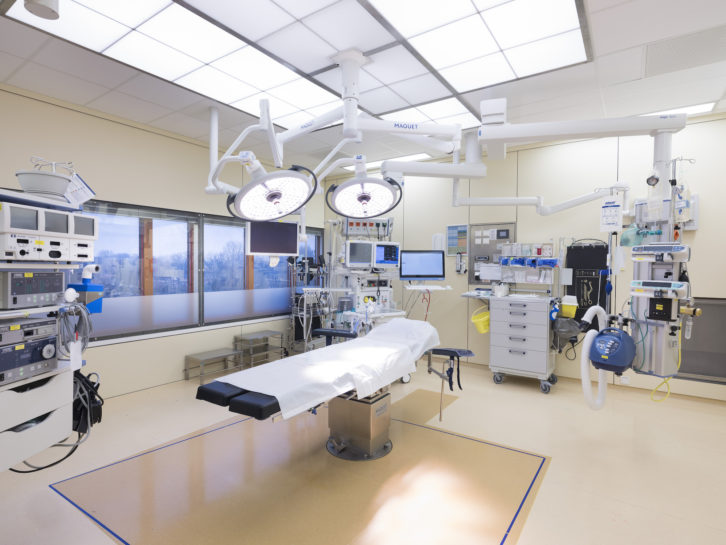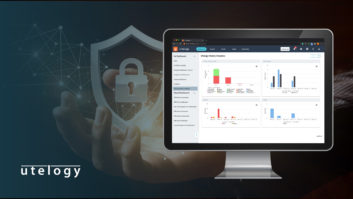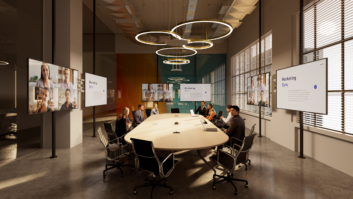
In the first part of this feature we looked at the challenges that are unique to medical AV working environments. Here David Davies considers the adoption of 4K and collaboration technologies across the sector.
Once manufacturers have negotiated the fundamental conditions relating to EU device directives, there is then the potentially thorny matter of which technologies are pertinent to healthcare, as well as the extent to which hospitals and other facilities are able to make investments that mean they can keep pace with broader developments in the professional AV industry.
Marty Sexton, senior product marketing & customer reference manager at Poly (formerly Polycom), highlights three primary areas in which the healthcare sector is aligning with more general AV trends: accessibility, affordability and flexibility/usability. Of the last-named trend, Sexton pinpoints the “VaaS (video as a service) phenomenon that has grown out of one simple thing – ease of use. Even though [it has been] around for many years, it only gained traction when service models could provide simple workflow scheduling – one click to join and integration into everyday user applications. The healthcare market is aligned with the flexibility of using multiple services as needed.”
And in terms of video infrastructures, there are plenty of indications that 4K/UHD will soon be as ubiquitous in healthcare as it is in other markets. In many cases, “mainstream video solutions can easily meet most of the needs in a medical environment,” says Sexton.
However, certain applications – such as those involving an educational element – may necessitate a specialised delivery or ‘shared’ resources that allow content to be viewed in multiple locations. Sexton remarks: “Early adopters of 4K systems systems such as the Poly G7500 [content and videoconferencing solution] in the medical community are attracted by the ability to deliver remote education with better fidelity, all from a single interface for content sharing and video calls. For example, [non-profit educational foundation] The Lion Foundation is using 4K video to enable ear, nose and throat surgeons to capture a high-resolution video of the procedure so students and trainee doctors are able to get the best possible view of the surgeries being undertaken.”
“Over time it is more likely that you will encounter complete 4K workflows from capture through to display”
Dimitry Van Kemenade, Sony Professional
Dimitry Van Kemenade, head of marketing Healthcare Solutions Europe at Sony Professional Solutions Europe, observes that “the early phase of 4K” adoption in medical circles has already passed and that the technology is “now on its way to becoming mainstream for all kinds of healthcare applications.” The way in which it is implemented may vary, however, “some operating rooms, for example, have taken the first step of buying a 4K native monitor for use with an endoscope equipped with an HD camera. In that instance, the HD image will be upscaled to 4K for better performance. But over time it is more likely that you will encounter complete 4K workflows from capture through to display.”
Healthcare is now “one of the main focus areas within Sony Professional”, and as such, the company continues to develop sector-specific solutions. Sony announced at the start of September a “new, more user-friendly workflow version” of the vendor-neutral medical imaging platform NUCLeUS. It’s features include: handling of multiple formats and standards, including resolutions of up to 4K; enhanced streaming and recording of audio and video, powered by advanced video switching and routing capabilities; improved image routing and viewing options, enabling smoother imaging workflows through all phases of a surgical intervention; real-time communication tools, including smarter annotation features, for educational purposes; and workflow enhancement through smart applications like rotation correction.
As potential complexity in medical imaging continues to grow, the system provides a centralised infrastructure as a solution. Rolf Messmer, strategic marketing manager for Medical AV/IT System Solutions at Sony Professional, explains: “With a significant increase in connected devices in modern hospitals, it’s now more important than ever to put a central imaging ‘operating system’ in place that collects, stores and distributes medical imaging files, not only in operating rooms, examination rooms and interventional suites but across the entire hospital network.”
Video calling and collaboration
Indeed, there is a general consensus that technologies which ease collaboration – and help to reduce travel-related expenses – are likely to become evermore highly prized by medical professionals. Crowe says: “With financial and staffing pressures an ever-present challenge, healthcare providers are turning to video calling, messaging and collaboration solutions, and as we see happening in the corporate space these are becoming an essential part of communication in the modern healthcare environment. The key within healthcare is interoperability and the supply of a solution that is reliable, secure, easy to use and able to operate within the HSCN network.”
The importance of security has been brought into greater focus of late with several high-profile IT system data-breach incidents in the healthcare sector. Putting that to one side, it is evident that – as in so many other areas – IP-based infrastructures are set to be a great enabling factor as ways of working evolve.
“AV over IP is starting to play a more prominent role within healthcare, and in particular in the delivery and distribution of content for simulation and training environments,” says Crowe. “The need to manage and distribute multiple content feeds to numerous locations during training and debrief scenarios lends itself to the flexibility offered by the use of AV over IP and the gradual improvement to network infrastructures within the NHS is helping to remove barriers to the implementation of AV over IP as a solution.”
Meanwhile, in some quarters, there is a feeling that all-encompassing solutions are becoming more prevalent in some areas. “I can’t speak for our competitors, but we notice that the broader AV market is more and more shifting towards packaged solutions,” says Crestron’s Ooms. “For the healthcare sector, there’s a clear difference between the solutions for operating rooms and those for other applications. Operating rooms will always require customised solutions, but for meeting rooms, patient rooms and other less medical spaces in the healthcare sector, packaged solutions – including [in our case products like] the Crestron Flex conferencing system and Crestron Mercury [UC and AV all-in-one tabletop solution] – are the norm.”
The years of austerity that have characterised a number of European countries in the post-2008 recession period have made the outlook for the (non-private) healthcare sector difficult to predict. But with many vendors reporting strong and continuing business in multiple healthcare applications, it is evident that this can be an important sector for vendors who are able to provide solutions that are robust, reliable and responsive.
Case Study: Sony solution delivers video flexibility for Dutch hospital
In a recent deployment Franciscus Gasthuis & Vlietland selected Sony’s NUCLeUS video-over-IP platform to enhance the surgical imaging workflow in the hospital’s 18 operating rooms.
All NUCLeUS systems have been installed over a phased two-year period by Netherlands-based integrator AVEX. The operating rooms are situated at the hospital’s two main sites in Gasthuis and Vlietland on the outskirts of Rotterdam.
NUCLeUS enables OR staff to control the routing, recording and distribution of HD video from endoscopic cameras and other surgical imaging sources. Any source can be assigned instantly to any destination using the system’s intuitive touchscreen interface. Digital video, still images and other associated patient information are carried over the hospital’s IP network. Meanwhile, content can be viewed on displays located in the OR and streamed to other operating rooms, doctors’ offices, consulting rooms and lecture theatres anywhere on campus.
The Sony system has been fully integrated with Franciscus Gasthuis & Vlietland’s EPD and PACS patient information and communication platforms. The deployment is also making use of the horizon correction app, ensuring that video captured with endoscopic cameras in the OR is always viewed ‘right way up’ as the surgeon works.
Lauren Pollinger, project manager at Franciscus Gasthuis & Vlietland, comments: “The main reason we chose Sony NUCLeUS is its extensive functionality, which include telestration and the horizon correction app. In addition, the image routing system assists in improving OR staff’s workflow. For example, they can add videos and photos to the Electronic Patient File (EPD), while also offering full access to the footage in the event of any complications, up to three months after recording.”
www.clearone.com
www.crestron.com
www.poly.com
www.pureav.co.uk
http://pro.sony.eu







